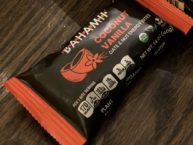We all are aware of the fact that consuming fresh organic vegetables is one of the cornerstones of good health. Health experts firmly believe that eating large amounts of high-quality vegetables every day is one of the most important steps to achieving optimal well-being.
Unfortunately, many people fail to get enough vegetables in their diet. In fact, only a quarter of American adults today consume three or more servings of vegetables daily. Here are a few tips on how to maximize your nutritional intake from vegetables –
The Raw Deal –
Fresh organic vegetables are an important part of a wholesome, balanced diet. They contain a wide array of antioxidants and essential compounds that you will not find in other food sources. Fresh greens contain phytochemicals that offer multiple benefits to your health, such as helping to reduce inflammation, reducing carcinogens, maintaining your DNA, and regulating your cell reproduction. Consuming raw veggies also provides you with biophotons, the smallest physical units of light, which are stored in and used by all biological organisms. Naturally grown fresh vegetables, raw sprouts, and sun-ripened fruits are naturally rich in this light energy.
Sparkle With Sprouts –
Sprouts are a living food you should include in your diet. It is easy to include common greens, such as spinach, kale, lettuce, and cabbage, in your meals. However, don’t miss out on other types of vegetables, like sprouts. Sprouts have an impressive nutritional profile and they are also easy to grow.
Sprouts are a living food you should include in your diet. It is easy to include common greens, such as spinach, kale, lettuce, and cabbage, in your meals. However, don’t miss out on other types of vegetables, like sprouts. Sprouts have an impressive nutritional profile and they are also easy to grow.
Here are some interesting facts about sprouts:
• They can contain up to 100 times more enzymes than raw fruits and vegetables. Sprouts help your body to extract more vitamins, minerals, amino acids, and essential fats from the foods you eat.
• Foods like beans, nuts, seeds and grains have higher protein and fiber content when sprouted.
• Vitamins and essential fatty acid content of plant foods dramatically increase during the sprouting process. In fact, the nutrient content can increase as much as 30 times the original value within just a few days of sprouting.
• Minerals like calcium and magnesium bind to protein during sprouting, making them more bioavailable.
• Sprouts are easy to grow. You can even grow them in your own kitchen. They’re also very inexpensive, and will not add any burden to your budget.
There are many types of beans, seeds, nuts, and grains that you can sprout. Sunflower seeds and pea sprouts are among the top choices, as they can offer you with a wide array of nutrients. They can each provide you with 30 times more nutrition than organic garden-grown vegetables.
Sunflower seeds are rich in minerals, healthy fats, essential fatty acids, amino acids like l-arginine, fiber, and phytosterols. They are one of the best seeds you can add to your diet, and sprouting them will improve their nutrient content by as much as 300 to 1,200 percent. Sprouted sunflower seeds, like peas, also contain plenty of iron, chlorophyll, and phytosterols.
Sunflower sprouts are very easy to include in your diet. They can be added to salads, used as a garnish, or even served as a side dish. Here’s one delicious sunflower sprout recipe you can try:
Sunflower Power Salad.
Ingredients:
1 large head red cabbage, shredded
1 pound spinach
2 cups fresh or packed sunflower sprouts
1 bunch fresh cilantro, chopped
1 cup toasted sunflower seeds
Basil-Cider Vinaigrette:
¼ cup apple cider vinegar
¼ cup olive oil
2 tablespoons water
1 tablespoon Dijon mustard
1 garlic clove, pressed
2 tablespoons fresh basil, chopped
Salt and pepper to taste
Procedure:
1. Preheat the oven to 350 degrees Fahrenheit.
2. Put the sunflower seeds in a rectangular dish and place in the oven to brown. This takes about 10 minutes.
3. Combine and mix all of the dressing ingredients in a bowl.
4. In another large bowl, mix the spinach, cabbage, cilantro, and sunflower sprouts. Add the dressing and the toasted sunflower seeds. Serve immediately.
This recipe makes four servings.
Go Local –
Conventional Wisdom –
If you cannot obtain organic vegetables or cannot grow a vegetable garden, you can buy conventionally grown vegetables. However, take extra care when purchasing non-organic produce, as they may be tainted with chemical pesticides. Wash them thoroughly and removing the peels and cores.
The Environmental Working Group (EWG) offers a “Shopper’s Guide to Pesticides in Produce”that will help you determine the crops with the highest and lowest levels of pesticide residue. Refer to this list, so you will know which vegetables are best to buy organic.
About the Author:
Elaine is a writer for Mercola (read more about Mercola here). She is currently researching ways to get nutrients like protein and L-Arginine from plant food sources. She hopes this will educate people on the importance of having vegetables in their diet. When not busy writing, she spends a great deal of time surfing the Internet for useful health resources.







22 comments for “Produce With Power”